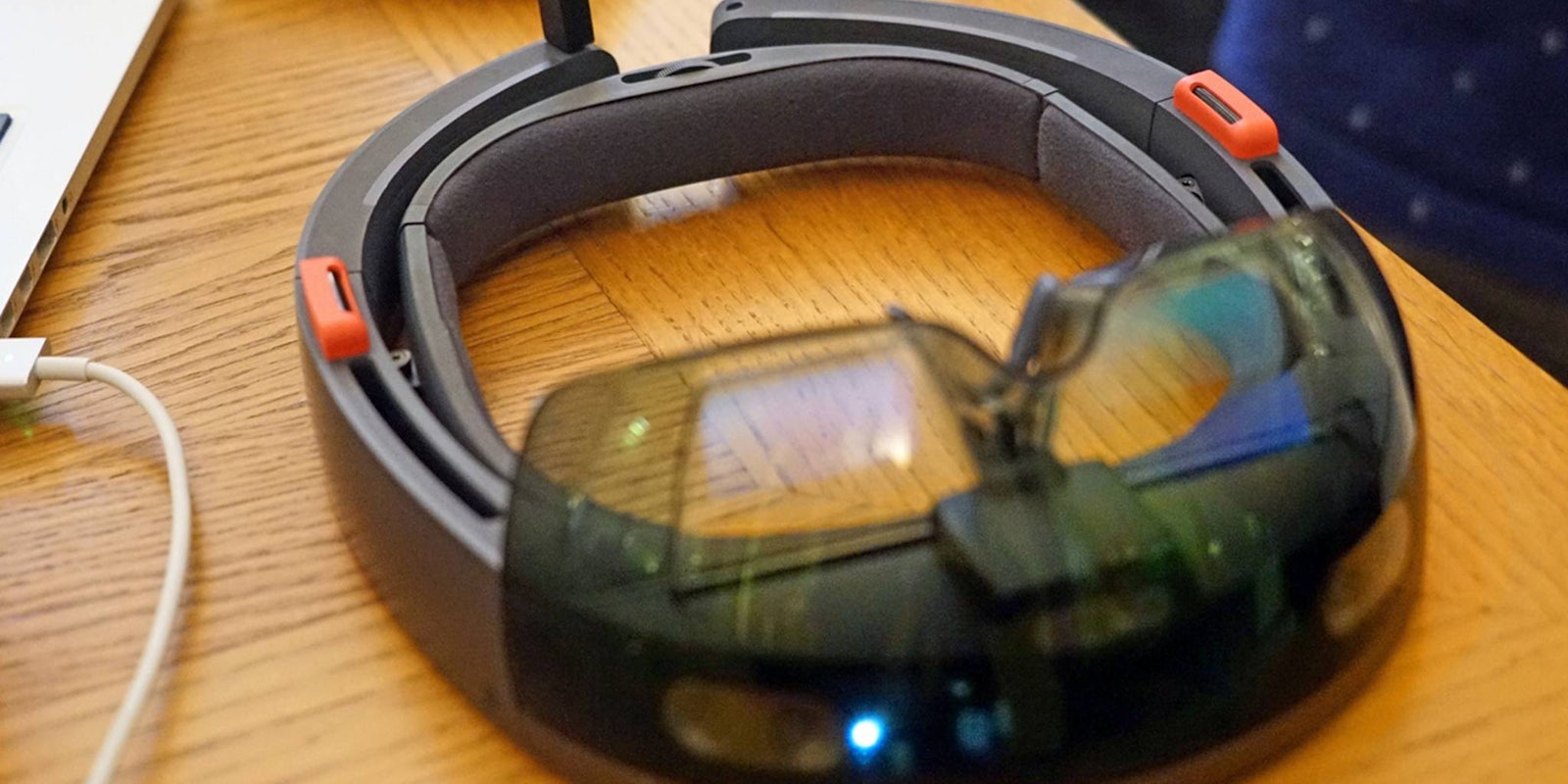Pokémon Go has put augmented reality into everyone’s pockets, but the Microsoft HoloLens is the device that shows off the true power of the platform. Now you any everyone else can get your hands on the device—assuming you’re willing to part with a significant chunk of cash.
Any Microsoft developer—or honestly, just any person since Microsoft won’t know if you’re developing for the device or not and there’s no application required—located in the United States or Canada can now order up to five of the incredible augmented reality wearables for a cool $3,000 a piece.
Unlike the Oculus Rift and virtual reality headsets, the HoloLens is essentially a self-contained computer and doesn’t require a PC or smartphone to power it—though if you’re planning to actually develop for it, you’ll need a Windows 10 machine.
While there is plenty of potential for the HoloLens and Microsoft has gone to great lengths to show off usage cases for the device that range from entertaining to practical, you’re still probably best sitting out the developer phase.
For starters, $3,000 is an awful lot to spend on a device that really doesn’t have a whole lot going for it at the moment. Microsoft is opening it up to developers, which means the creators who will build apps and services for it are just getting started.
That’s a big monetary commitment for a device that comes with no return policy and no warranty. And if you get sick of it, good luck finding a secondary market for it; the agreement signed by purchasers includes a clause that prevents the buyer from reselling the device.
It’s also worth noting that the HoloLens isn’t the first augmented reality wearable to hit the market; the most notable one that came before it was Google Glass, Google’s crack at a wearable head-mounted computer. It cost $1,500 and was available to the public for just eight months before Google announced it was pulling the plug on production.
But maybe you want to brave it for that ever sought-after tag of early adopter. Go ahead and take the risk and put down your payment for the Development Edition of the HoloLens. Worst case scenario, you’ll have something to donate to a museum that collects failed and forgotten pieces of technology.
H/T CNet


